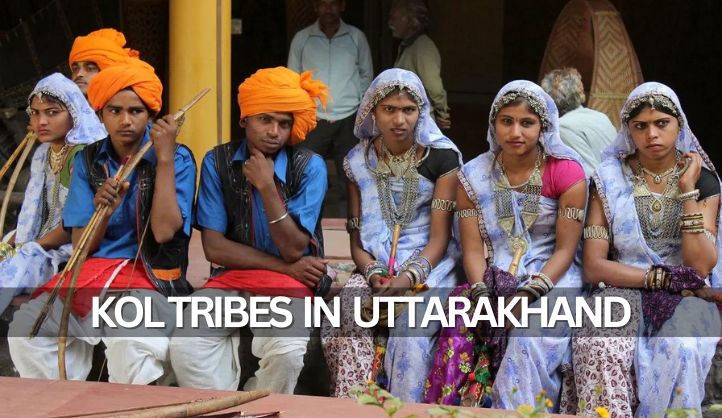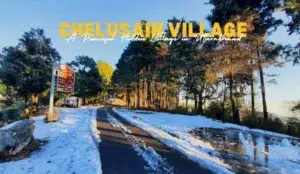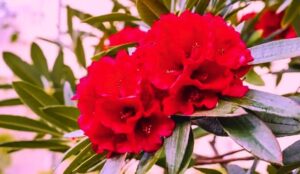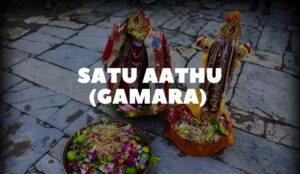Uttarakhand, a state renowned for its majestic landscapes and spiritual significance, is also home to a diverse array of indigenous tribes, each contributing to the region’s rich cultural tapestry. Among these, the Kol tribes hold a unique place with their distinct traditions, lifestyle, and historical background. This blog delves into the intriguing world of the Kol tribes of Uttarakhand, exploring their origins, culture, and current way of life.
Who are the Kol Tribes?
The Kol tribes, also known as the Kols, are indigenous people primarily residing in the hilly regions of Uttarakhand. Historically, they are one of the oldest tribal groups in the Indian subcontinent. The term “Kol” is believed to be derived from the Sanskrit word “Kula,” meaning “family” or “clan,” which reflects the tribe’s close-knit social structure.
Historical Background
The Kol tribes have a rich history that dates back to ancient times. They are considered to be one of the earliest inhabitants of the central and northern Indian regions. Their presence is noted in various historical texts, including the ancient scriptures and colonial records. Traditionally, the Kols were known as forest dwellers and practiced shifting agriculture, which allowed them to live in harmony with their natural surroundings.
Cultural Heritage
1. Language and Dialects
The Kol tribes speak a variety of dialects that belong to the Dravidian language family. These dialects have evolved and are influenced by the surrounding languages of Uttarakhand. While their traditional language is still spoken, many Kol tribespeople also speak Hindi and other regional languages for communication with outsiders.
2. Traditional Dress
The traditional attire of the Kol tribes reflects their close connection with nature and their practical needs. Women typically wear simple cotton saris or lehengas, adorned with traditional jewelry made from locally sourced materials. Men often wear dhotis or lungis paired with short kurtas. The attire is designed to suit the local climate and terrain, emphasizing comfort and practicality.
3. Festivals and Rituals
The Kol tribes celebrate various festivals and rituals that are deeply rooted in their cultural and religious practices. Major festivals include:
Kali Puja: A significant religious festival dedicated to the goddess Kali, celebrated with traditional rituals and community feasts.
Basant Panchami: A festival marking the arrival of spring, celebrated with music, dance, and offerings to the deities.
Harvest Festivals: The Kols celebrate the harvest season with traditional dances, songs, and community gatherings to give thanks for a bountiful crop.
4. Art and Craftsmanship
The Kol tribes are known for their traditional arts and crafts, including weaving, pottery, and basketry. Their craftsmanship often incorporates natural dyes and materials, reflecting their environment and lifestyle. Handmade items such as woven baskets and clay pots are not only functional but also carry aesthetic value.
Traditional Lifestyle
1. Agriculture and Livelihood
The Kol tribes traditionally practiced shifting agriculture, also known as “slash-and-burn” farming. This method involves clearing forest land for cultivation, planting crops, and then moving on to new areas once the soil is depleted. This practice allows the forest to regenerate, maintaining ecological balance. In recent years, many Kol tribespeople have adopted more settled forms of agriculture and diversified their livelihoods.
2. Housing
Kol tribal homes are typically constructed using locally available materials such as wood, bamboo, and mud. Their houses are designed to withstand the hilly terrain and varying weather conditions. Traditional homes often feature thatched roofs and open verandas, providing a comfortable living space in harmony with nature.
3. Social Structure
The Kol tribes have a well-defined social structure with a focus on community and family. The village is governed by a council of elders who make decisions on communal matters and resolve disputes. Social cohesion is maintained through communal activities, rituals, and shared responsibilities.
Challenges and Modernization
While the Kol tribes have managed to preserve their cultural heritage over the centuries, they face various challenges in the modern era. Issues such as deforestation, land encroachment, and limited access to education and healthcare have impacted their traditional way of life. Efforts are being made to integrate modern amenities and education while preserving their cultural identity.
Other Tribes of Uttarakhand
Uttarakhand, with its diverse geography and rich cultural tapestry, is home to several indigenous tribes, each with unique traditions and ways of life. Here’s an overview of some of the prominent tribes of Uttarakhand:
1. Tharu Tribe
Location: Primarily in the Terai region of Uttarakhand.
Culture and Traditions:
- The Tharu are known for their rich folklore, dance, and music.
- They practice agriculture, particularly the cultivation of rice, and are skilled in traditional crafts.
- Festivals like Holi and Tihar are celebrated with distinctive rituals and performances.
Lifestyle:
- Traditionally, the Tharu live in small, self-sustaining villages with homes made from mud and thatch.
- They have a close relationship with the forest and wildlife, often using traditional knowledge for medicinal and agricultural purposes.
2. Buksas Tribe
Location: Predominantly in the Terai and Bhabar regions of Uttarakhand.
Culture and Traditions:
- The Buksa tribe has a vibrant cultural heritage with traditional music, dance, and rituals.
- They are known for their colorful attire and intricate beadwork.
Lifestyle:
- The Buksa people practice agriculture, focusing on crops like rice, maize, and vegetables.
- Their traditional homes are made from locally available materials, designed to suit the region’s climate.
3. Raji Tribe
Location: Mainly in the regions of Pithoragarh and Champawat.
Culture and Traditions:
- The Raji tribe is known for its traditional dance forms and oral storytelling.
- They celebrate festivals such as Magh Mela and Holi with special rituals.
Lifestyle:
- Traditionally, the Raji are forest dwellers and practice shifting agriculture.
- Their lifestyle is closely intertwined with nature, and they are skilled in using forest resources for their daily needs.
4. Rathia Tribe
Location: Found in parts of the Pithoragarh district.
Culture and Traditions:
- The Rathia tribe is known for their unique traditional customs, including folk dances and songs.
- Their festivals often include community feasts and ceremonies that reflect their deep connection to nature.
Lifestyle:
- The Rathia people engage in agriculture and animal husbandry.
- Their homes are typically made from locally sourced materials, reflecting their integration with the environment.
5. Kumaoni and Garhwali Tribes
Location: The Kumaoni and Garhwali are not tribes in the traditional sense but are indigenous communities of Uttarakhand.
Culture and Traditions:
- Both communities have rich cultural traditions, including unique dance forms, music, and festivals.
- Kumaoni people are known for their traditional attire, which includes vibrant colors and intricate patterns.
- Garhwali people have a distinct cultural heritage with traditional practices and celebrations.
Lifestyle:
- Both communities practice agriculture as their primary occupation, growing crops like wheat, rice, and pulses.
- They live in terraced houses adapted to the hilly terrain of Uttarakhand.
6. Jaunsari Tribe
Location: Primarily in the Jaunsar-Bawar region of the Dehradun district.
Culture and Traditions:
- The Jaunsari tribe has a rich tradition of folk music, dance, and storytelling.
- They celebrate festivals such as Magh Mela with traditional ceremonies and community gatherings.
Lifestyle:
- The Jaunsari people practice subsistence agriculture, growing crops like barley, maize, and potatoes.
- Their homes are designed to withstand the cold climate of the region and are often built using stone and wood.
Conclusion
The Kol tribes of Uttarakhand offer a fascinating glimpse into the region’s ancient and diverse cultural heritage. Their traditional practices, vibrant festivals, and unique way of life reflect a deep connection with nature and a strong sense of community. As Uttarakhand continues to evolve, it is crucial to recognize and respect the cultural heritage of its indigenous tribes, ensuring that their traditions and values are preserved for future generations.
Exploring the world of the Kol tribes provides valuable insights into the rich mosaic of Uttarakhand’s cultural landscape and highlights the importance of preserving the diversity and heritage of indigenous communities.
FAQs About the Kol Tribes of Uttarakhand
1. Who are the Kol tribes?
The Kol tribes, also known as the Kols, are indigenous people residing in the hilly regions of Uttarakhand. They are among the oldest tribal groups in the Indian subcontinent, known for their distinct traditions, language, and way of life.
2. What is the origin of the name “Kol”?
The term “Kol” is believed to be derived from the Sanskrit word “Kula,” meaning “family” or “clan.” This reflects the tribe’s close-knit social structure and communal lifestyle.
3. What languages do the Kol tribes speak?
The Kol tribes speak various dialects belonging to the Dravidian language family. Over time, their traditional language has been influenced by surrounding languages, and many Kol tribespeople also speak Hindi and other regional languages.
4. What is the traditional dress of the Kol tribes?
Kol tribespeople traditionally wear simple and practical attire suited to their environment. Women typically wear cotton saris or lehengas adorned with traditional jewelry, while men wear dhotis or lungis with short kurtas. Their clothing emphasizes comfort and functionality.
5. What festivals do the Kol tribes celebrate?
The Kol tribes celebrate several festivals, including:
Kali Puja: Dedicated to the goddess Kali, featuring traditional rituals and community feasts.
Basant Panchami: Marking the arrival of spring, celebrated with music, dance, and offerings to deities.
Harvest Festivals: Celebrated with traditional dances, songs, and community gatherings to give thanks for the harvest.
6. How do the Kol tribes traditionally make a living?
Historically, the Kol tribes practiced shifting agriculture, or “slash-and-burn” farming, involving clearing forest land for cultivation. Many have transitioned to more settled forms of agriculture and diversified their livelihoods in recent years.





